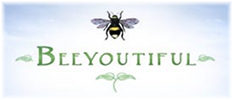Ballarat Wildlife Park: Marsupial Madness!
September 27, 2013 in Australia, Education, Oceania, Travelogue
The Ballarat Wildlife Park is a master class in marsupials.
We learned more in one day than I’ve managed to glean in my entire life. Of course part of what makes it interesting is being in a country where a wide range of the world’s marsupials live and visiting a place where you can touch them, feed them and get an up close look at what makes them special. We visited the Wildlife Park for Bound Round, an in spite of rain and hail on a blustery day, we’re all so glad we did. It’s been, by far, the most interesting animal encounter we’ve had in a very long time.
Today’s post is for the kids who follow along…
…and any adults who happen to still find animals as fascinating as we do.
Fun facts about marsupials:
- The babies are born teeny tiny and then crawl into the mother’s pouch where they spend many months growing, nursing and growing some more.
- Almost all marsupials live in the southern hemisphere.
- The ONE that lives north of Mexico is the opossum.
- 70% of the world’s marsupials live in Australia, New Guinea and nearby islands.
- All marsupial babies are called “joeys.”
Kangaroos
We might as well start at the top of the size chain and work our way down, shall we? You probably already know this but kangaroos are unique to Australia. There are three basic kinds: Eastern Greys, Western Greys, and Red Kangaroos, there are a few subsets of those three basic kinds. The ones we saw, and got to feed, were Eastern Grey kangaroos of the sort that live on Kangaroo Island. An early visitor to that island recorded in his journal that in the absence of any natural predator, the kangaroos were very tame and they were able to walk right up and pat them. The ‘roos at the Wildlife Park are the same!
Fun facts about kangaroos:
- They have enormous feet! (see the photo!)
- The babies live in their mother’s pouches for about six months
- Kangaroos are great swimmers
- They are grazers and chew cud, just like cows
- They do not fart, or burp! The fancy science term for this is “absence of digestive methane release.”
- The groups they live in are called “mobs”
- They love to “box” which is hopping up and kicking with their feet
- Hand raised kangaroos will forget they are kangaroos (or begin to think that all humans are ‘roos too!) and box with people over food! (see photo!)
- They’re good eating!
Hannah had a cheeky kangaroo grab her whole bag of food right out of her hands and rip it up!






Wombats
Next down the size chain is the wombat. We didn’t know what a wombat looked like until we met Patrick. Imagine a guinea pig, only 75lbs! These fellows are nocturnal, which means they party all night and sleep all day. These guys are super cute.
Wombat fun facts:
- They have a bony plate in their bums, which they use for rounding out the inside of their burrows and sometimes crushing the skull of a dog or other predator. Yep, they essentially sit on their heads!
- They bite for communication. Ouch.
- They burrow.
- They have a backwards facing pouch (so they don’t get dirt in there whilst they’re digging!)
- They’re vegetarian
- They can run really fast, up to 40km an hour… but only for about a minute!’
Koalas
Koalas are not bears, so don’t say, “koala bear” any more! There are two kinds of koala, the ones that live down here in Victoria, that are a little bigger with a little thicker coats to keep warm in the chilly winters, and the northern koalas which are a little smaller. These guys are big sleepers and super picky eaters. They will only eat ONE type of eucalyptus leaf and even then, they sniff every single leaf for suitability. This makes them tough to maintain in a zoo setting. Australia ships the right kind of eucalypt around the world to zoos to feed the fussy little dudes.
Koala fun facts:
- These guys also have a bony plate in their bums, for balancing in the notch of trees where they nap.
- Their pouches also face downward, which seems odd for a tree dwelling critter, but it keeps bark and leaves and stuff from getting down in the pouch when they are climbing.
- The mamas can squeeze their pouch up tight so that the babies don’t fall out!
- They sleep 14-18 hours a day
- The leaves they eat are tough and wear down their teeth, most koala in the wild die of starvation, not old age, when their teeth wear out and they can’t eat.
- The hair around their ears is very sensitive and they don’t like people to touch it
- They only live on the east coast of Australia
- “Koala” means “doesn’t drink” because koalas very rarely drink. The moisture they need comes from the leaves they eat.
- Because they only eat ONE thing, habitat conservation is a real concern!


Tasmanian Devil
Did you know that there are real tasmanian devils? It’s not just a cartoon character. In fact, the real ones are nothing like the cartoon character. They are a lot like a big fat rat; about the size of a small dog. They’re black with white spots and they’re in danger because of a facial tumor disease that is killing many of the wild ones. They take their name from the island that they are from: Tasmania. It’s the only place in the world where there are still wild Tasmanian Devils!
Tasmanian Devil fun facts:
- They are the largest carnivorous marsupial
- The males have a sort of pouch too, which protects their testicals
- They can bite very hard, through bone and thick metal wire!
- 20 or 30 joeys can be born to one mother, but only four will survive, as there are only four nipples in her pouch.
- The pouch is rear facing.
- Unlike kangaroo joeys, who come and go from their pouch, once a devil baby leaves, they stay outside.
- There are breeding programs at zoos and conservation centers all over Australia trying to develop a genetically diverse and viable population so that if the devils go extinct in the wild, they can be reintroduced.

Whew! That was a lot wasn’t it?
Do you feel like you know more about marsupials now? Of course the Ballarat Wildlife park also has two beautiful eagles, and a reptile house with alligators, crocodiles, snakes and other creepies.
We did learn one other non-marsupial fact that is making us feel much better. As you know, Australia has nine of the world’s ten most deadly snakes. I’ve been worried about that more than a little, especially since we are going camping. Tarl, the head keeper at the Wildlife Park told us that there are an average of only two deaths per year in Australia due to snake bite. I’m breathing a bit easier now.
Do you have any questions about the marsupials, or any of the other animals? Ask away, we’ll do our best to find the answers!



 RSS - Posts
RSS - Posts


























No need for my kids to go to school after reading this blog! 😉 And, by the way, koalas ARE bears-I have one all the way from Australia, brought back by my daddy when he was in the merchant navy which my daughter plays with, and I do believe they are called coca cola bears; God I was cute! I think my “bear” is made from kangaroo skin, and the one fact that surprised me the most is that all marsupial babies are called joeys-you learn something new every day. Great pics as always.x
Great post!!! I am going to have my kids read this….they are going to love it!
Feeding kangaroos? That looks like so much fun. I learned a lot from your post…never knew that wombats & koalas had bony plates near their bum!
Sarah M
I remember the opossums that we had at camp, and teaching the kids about them being the only marsupials in North America. We had a deaf girl come to camp for a weekend and I asked what the sign was for opossum. She hooked her index finger over her outstretched other index finger. Made perfect sense to me, since whenever I carried the two opossums they would just hang on my fingers, upside down. Don’t bring home a koala! The feeding fees are extremely high!!!!
What a great post – I learnt a few things today & will be getting the kids to have a look – was just talking with my friend about the swimming roos and she said that her husband has seen them whilst out fishing….brilliant!
[…] the petting zoo to the next level, and if you’re visiting Australia for the first time you’ll learn loads about the unique wildlife of this giant island. Don’t miss the reptile house, replete with […]